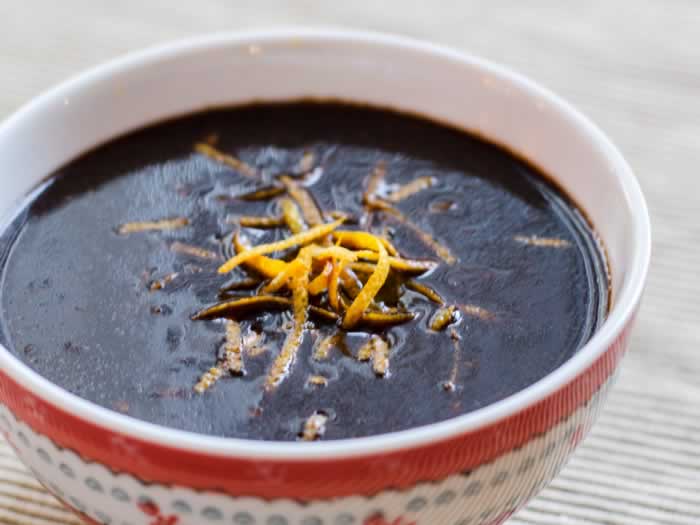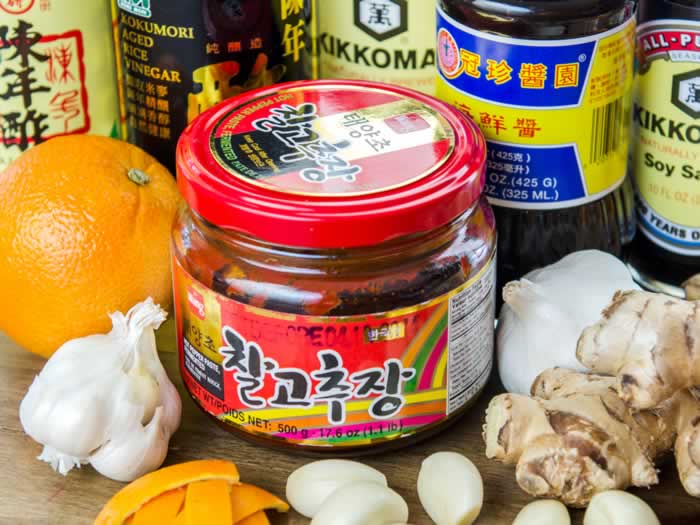 Here’s the great thing about Chinese culinary technique. If you learn the basic tenants of a stir-fry, including how to velvet poultry and other meats, you can create 100 different dishes without ever looking at a recipe.
Here’s the great thing about Chinese culinary technique. If you learn the basic tenants of a stir-fry, including how to velvet poultry and other meats, you can create 100 different dishes without ever looking at a recipe.
But there’s a catch. They will all taste the same.
You’ve noticed this in certain Chinese restaurants, right? And if you peruse Chinese cookbooks, you’ll notice it there too.
The same predictable aromatics and finishing sauces are used repeatedly. Garlic and ginger to begin the stir-fry and a mixture of soy sauce, rice wine, and rice vinegar to finish it.
Well okay, maybe they throw in a dash of sesame oil or oyster sauce on occasion.
I’m flipping through a book like that right now. It’s a James Beard Foundation Book Award winner.
But I’m a lucky one, because I had the opportunity to work with Barbara Tropp (creator of the famed China Moon Café) over a week of classes at The Yankee Kitchen Cooking School in Bellevue, Washington, which I was directing at the time.
She considered each element of the stir-fry thoughtfully and created dishes that were both stunningly original AND markedly different from one another.
If you have only two cookbooks on Chinese cuisine in your library, they should be The Modern Art of Chinese Cooking: Including an Unorthodox Chapter on East-West Desserts and a Provocative Essay on Wine and The China Moon Cookbook.
So thinking about Barbara the other day and frustrated with the sameness of many of the Chinese dishes I was encountering in local restaurants and highly rated cookbooks, I went to the kitchen and lined up every Asian ingredient I could lay my hands on.
The counter was heaped with soy sauce, rice vinegar, rice wine, hoisin sauce, oyster sauce, chile sauce, chile paste, black bean paste, soy bean paste, fish sauce, shrimp paste, dried shrimp, fermented black beans, Chinese five-spice and ten-spice, gingerroot, garlic, green onions, Thai basil, kaffir lime leaves, lemongrass, orange, and star anise, Schezuan peppercorn.
And then I tasted each one, slowly and thoughtfully. And started blending and balancing. I spent a couple of hours getting to know ingredients that I have used for decades. I mean REALLY getting to know them.
In this process of discovery, I came up with four distinctive sauces that I think you will love: Chinese Ten-Spice Marinade & Stir-Fry Sauce, Chinese Spicy Orange Sauce (below), Spicy Black Bean Stir-Fry Sauce (coming in soon), and Chinese Master Stir-Fry Sauce (coming soon).
Here’s the second of the four sauces.
Chinese Spicy Orange Sauce
This spicy, fragrant sauce is dynamite as an adjunct to freshly made pork dumplings, as a dressing for cold noodles, or as a stir-fry sauce. I love having it on hand.
Note For a simple noodle stir-fry for two, with 1 pound cooked noodles: Use 2 tablespoons oil in the wok and 2 sliced garlic cloves for the aromatics, 3-4 tablespoons of this sauce after stir-frying the noodles, and 2 tablespoons sliced green onion to finish
¼ cup hoisin sauce
¼ cup chicken stock
2 tablespoons Kikkoman soy sauce
2 tablespoons vegetable oil
2 tablespoons rice wine vinegar
1 tablespoon Wang Hot Pepper Paste (add up to 1 tablespoon more if you like it HOT) (other chile pastes will also work here; use what you have on hand)
finely grated zest of 1 orange
4 cloves garlic, peeled, mashed, and minced or pressed
1 teaspoon peeled, minced gingerroot
- In a medium mixing bowl, whisk hoisin sauce, soy sauce, vegetable oil, rice wine vinegar, hot pepper paste, orange zest, garlic, and ginger until well blended.
- Store in the fridge until needed; keeps a very long time.
Makes about 1¼ cup.
Cookin’ with Gas (inspiration from around the web)
- Chinese Master Sauce | Sybaritica
- 5 Asian Master Sauces that You Should Master | FabFood
Copyright 2015 Susan S. Bradley. All rights reserved.


Mmmm. That looks really good.
What a wonderful post, Susan! You’ve really inspired me to try (and I say “try” because Chinese food is what I’m least comfortable creating) to come up with my own sauce! Or, at the very least, add one of those cookbooks to my arsenal. My youngest daughter looooves Chinese food but her sister won’t go near it; I’m going to try to make some for her at home. This spicy orange sauce sounds particularly delicious and right up my alley. Thanks for the great information and have a wonderful Sunday!
Thanks Kristy! The reason I turned January into All Asia All Month (a few years ago) was to force myself to really concentrate on Asian cuisines. My professional culinary life was focused mostly on French, Italian, Spanish, and Mexican cuisines. So, like you, Chinese, Thai, Korean, and Japanese cuisines were those I was least comfortable with. But not anymore! I look forward to January now, instead of dreading it. And All Asia All Month frequently spills over into March and April as well–with a brief break for All Chocolate All Month in February.